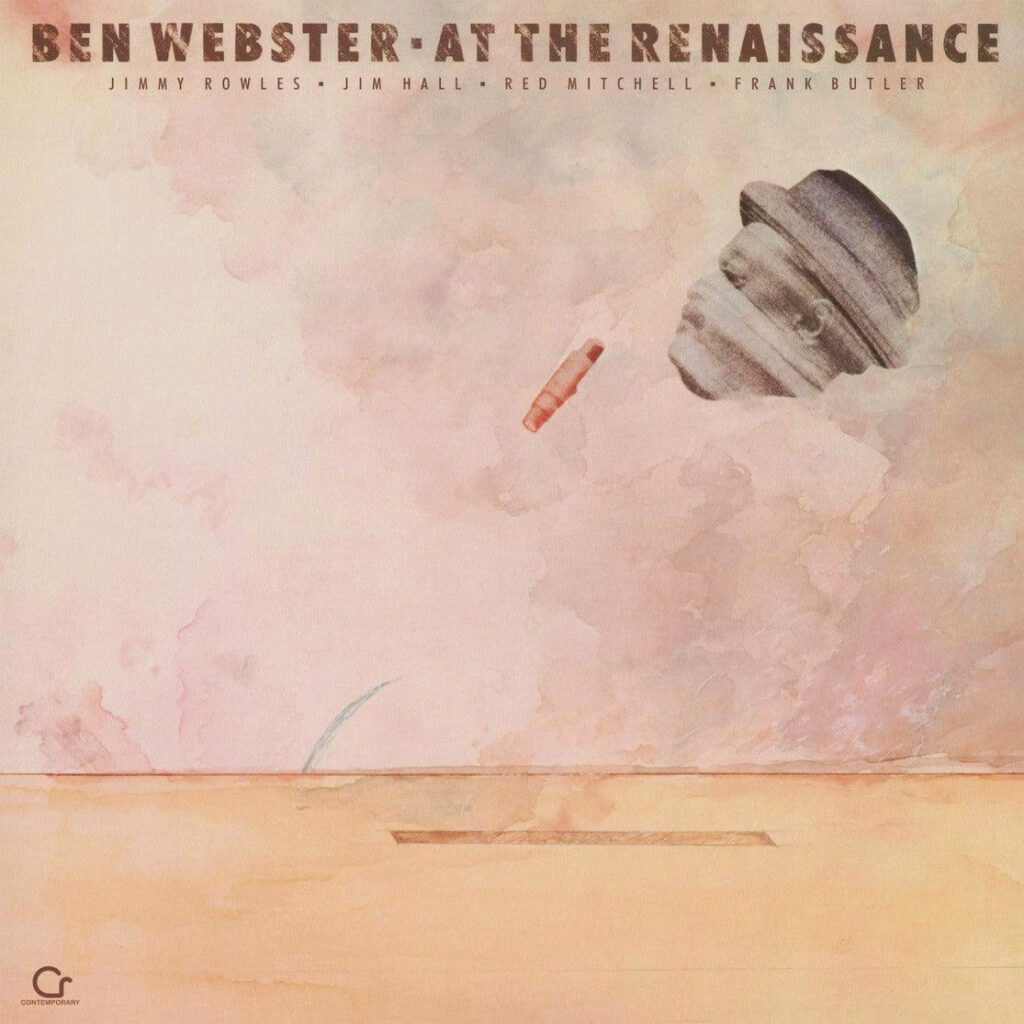As one of the greatest of tenor saxophonists, Ben Webster amassed a sizable discography across a long career. His live performances were also extensive and on occasion, those nights were recorded. Released posthumously in 1985, At the Renaissance is a fine introduction to Webster’s full-bodied, mature style as he stretches out with a sharp band. On November 8, Craft Recordings reissues an expanded edition of the original LP on 180 gram vinyl as part of the label’s Contemporary Records Acoustic Sounds series. There are certainly more important albums in Ben Webster’s body of work, but he rarely sounded better than he does right here.
Ben Webster is most renowned for his work with Duke Ellington, who he joined for an extended period in 1940 after playing in numerous bands, including those of Bennie Moten, Fletcher Henderson, Benny Carter, and Cab Calloway. Considered one of the “big three” tenor saxophonists of the swing era (the others are Coleman Hawkins and Lester Young), Webster was the first major player on the instrument to have a significant role in Ellington’s band, though by 1943 he’d made his exit for the clubs of 52nd Street.
Webster briefly rejoined Ellington later in the decade (he’d first played with Duke in the mid-’30s), but from the mid-’40s onward his career path is noted for an association with promoter Norman Granz’s Jazz at the Philharmonic initiative, co-led sessions with Hawkins, pianists Art Tatum and Oscar Pederson and saxophonist Gerry Mulligan, plus plenty of records and club dates as a leader.
At the Renaissance is just one of numerous albums capturing those club dates. Prior to departing for Europe in 1964, Webster gigged frequently at the Los Angeles club the Renaissance, often with Mulligan, but on October 14, 1960 he was leading the band heard here, with Jimmy Rowles on piano, Jim Hall on guitar, Red Mitchell on bass, and Frank Butler on drums.
Contemporary’s 1985 release gathered four selections, “Georgia on My Mind” and “Caravan” on side one, and “Ole Miss Blues” and “Stardust” on side two. In 1989, the Original Jazz Classics line released an edition with “Renaissance Blues” added as side one’s closer and “What Is This Thing Called Love” sequenced as track two on the flip.
This is the running order for Craft Recordings’ reissue, a solid serving of standards and blues that benefits from an unusually high level of immediacy and warmth. In his unfinished notes on the back cover, Contemporary’s owner-operator Lester Koenig details the difficulty of recording in such a small club. Although the sound isn’t perfect, any minor flaws here are erased by the maxed out level of intimacy throughout.
It’s possible that Ray Charles’ version of “Georgia on My Mind,” which was freshly released at this point, served as the inspiration for the song’s inclusion here, but as led by pianist Jimmy Rowles, the playing effectively channels the spirit of Hoagy Carmichael, who was also the composer of “Stardust.” Along with spotlighting Webster’s continued mastery, At the Renaissance is unconcerned with any gesture toward Modern Jazz relevance.
Instead, “Caravan” reinforces Webster’s history with Ellington, and “Renaissance Blues,” the set’s sole original (credited to all the band members) combines with W.C. Handy’s composition “Ole Miss Blues” to establish a pre-swing stylistic baseline. Cole Porter’s “What Is This Thing Called Love” delivers the obligatory nod to the Great American Songbook.
Original Jazz Classics put out At the Renaissance on compact disc with two more songs and a sequence that seems to reflect how the set unfolded that night at the club. Anybody with an interest in Ben Webster really should check out the full program, because the man’s playing was still essentially undiminished and there was no weak link in the band. But vinyl lovers will not be disappointed with this release, which captures the spirit of the evening exceptionally well.
GRADED ON A CURVE:
A
